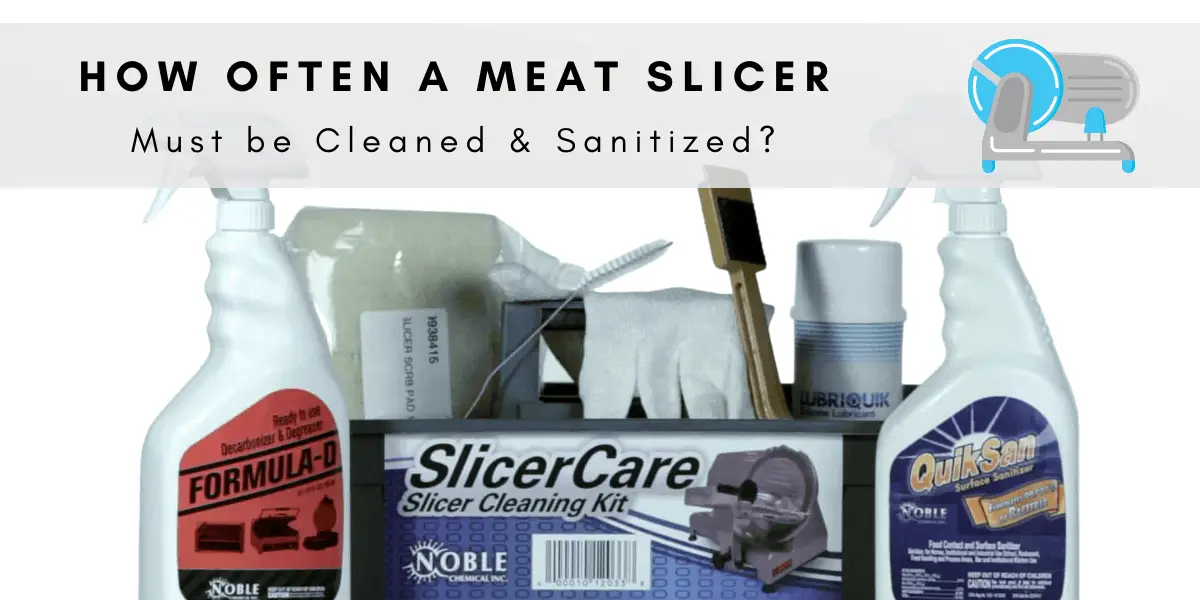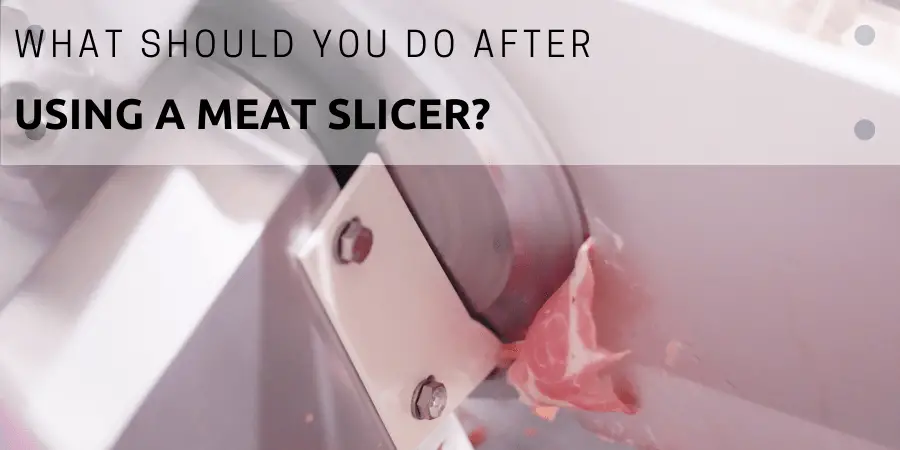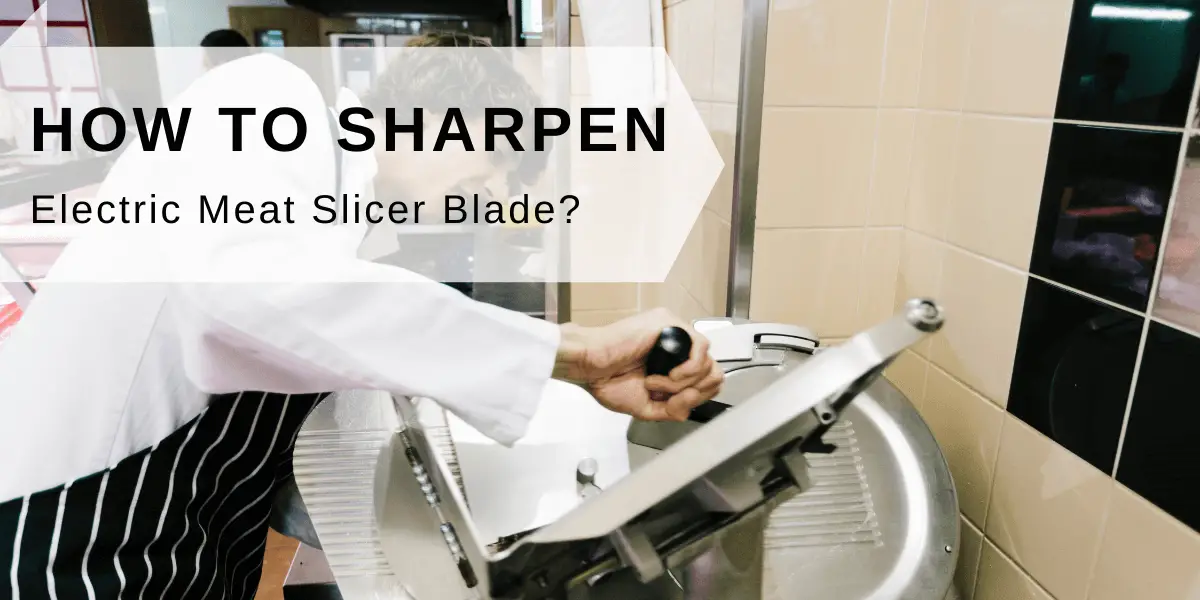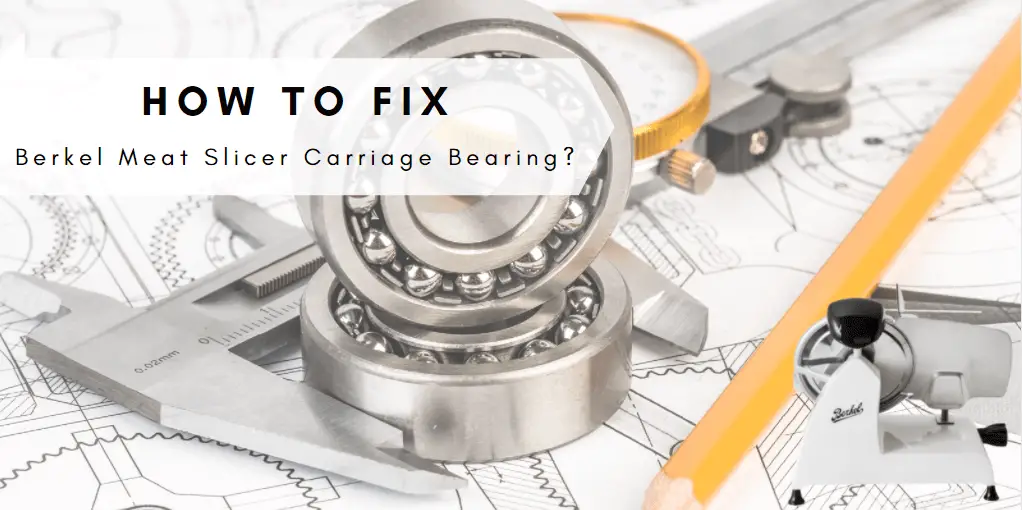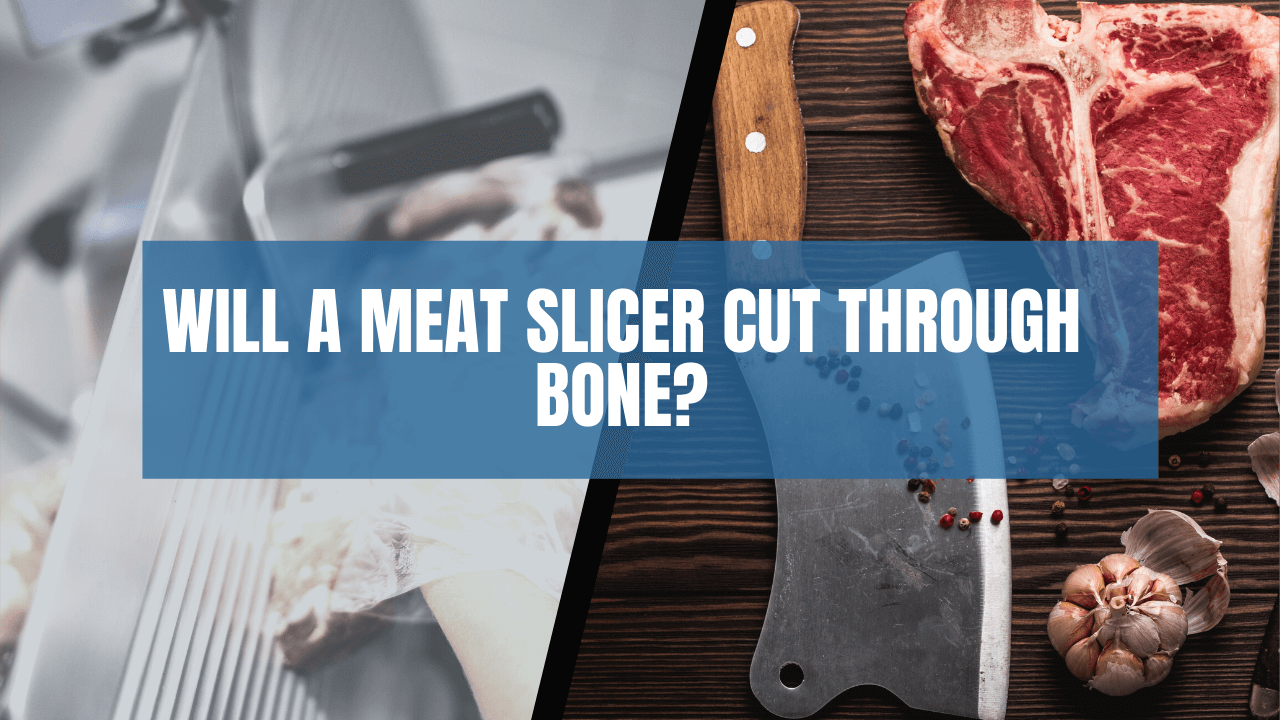While gear driven meat slicers are more durable and powerful, belt driven slicers are more affordable and easier to maintain. Choosing the right one depends on your specific needs and the expected usage of the slicer.
The Mechanics Of Meat Slicers
A meat slicer typically comprises a rotating blade, a carriage, a thickness guide, and a motor. The motor powers the blade while the carriage holds the food in place. The thickness guide helps control the size of each slice. The motor is what differentiates a gear-driven slicer from a belt-driven one.
Gear-Driven Meat Slicers
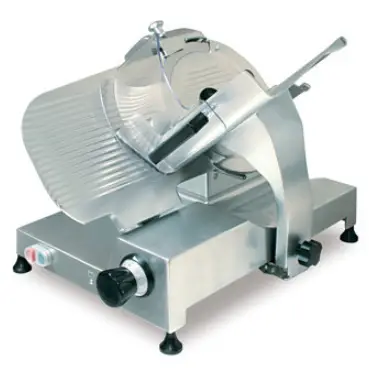
Gear-driven meat slicers are typically more powerful and resilient, relying on a gear system to transfer power from the motor to the blade. This arrangement leads to less slippage and more direct power transmission. Hence, gear-driven slicers are more suitable for slicing large volumes of meat or harder products like cheeses.
The Longevity of Gear-Driven Slicers
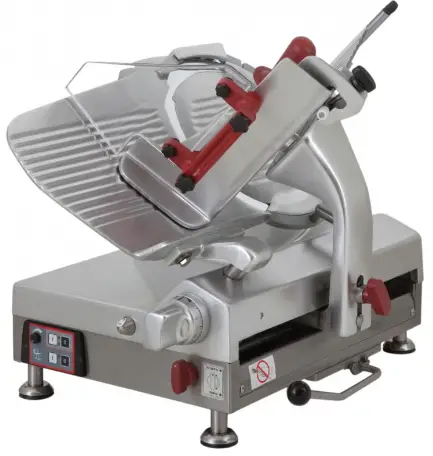
These machines are often associated with longevity and durability, as gears are less prone to wear and tear than belts. Gear-driven slicers also require less maintenance, providing another convenience layer for busy kitchens.
The Downside to Gear-Driven Slicers
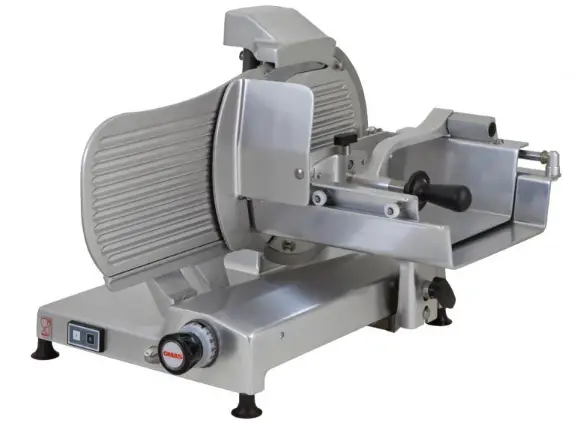
The primary drawback of gear-driven meat slicers is their higher initial cost. Moreover, repair can be expensive and time-consuming in the rare event of a gear failure.
Belt-Driven Meat Slicers
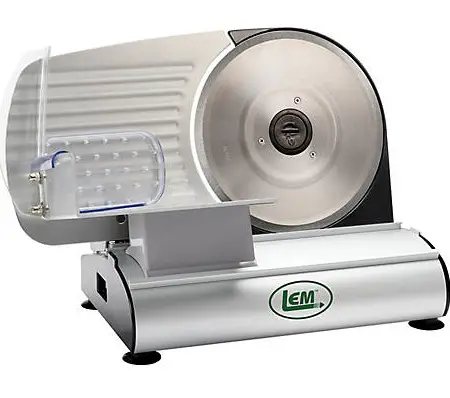
In contrast, belt-driven meat slicers utilize a belt and pulley system to transfer power from the motor to the blade. These models are typically quieter, lighter, and less expensive than their gear-driven counterparts.
The Versatility of Belt-Driven Slicers
Belt-driven slicers are versatile and well-suited for light to medium-duty slicing. They’re also easier to disassemble and clean, making them popular with many food establishments.
The Challenges with Belt-Driven Slicers
Conversely, belt-driven slicers can be less powerful, especially when dealing with larger volumes or harder foods. The belt may also require more frequent replacements compared to gear systems.
Differences Between Gear And Belt Driven Meat Slicers
Performance
- Gear driven slicers have a direct power transfer, resulting in more torque and no chance of slipping.
- Belt driven slicers are less expensive and maintain excellent performance in everyday situations.
Durability and Maintenance
- Gear driven slicers are more durable and require less maintenance over time.
- Belt driven slicers may require regular belt-tightening or replacement.
Repair Costs
- Gear driven slicers are more complicated and costly to repair.
- Belt driven slicers are easier and less expensive to repair.
Which One Is Better And Why?
It depends on your needs and the expected usage of the slicer:
- If you need a high-performance slicer for heavy usage, gear driven slicers are the better choice.
- Belt-driven slicers are more suitable for a more affordable option with easier maintenance.
Considerations When Choosing A Meat Slicer
Blade Size and Cutting Capacity
- Blade sizes range from 9″ to 14″ in commercial slicers.
- Cutting capacity is generally 2″ less than the blade size.
- Choose a blade size that can accommodate the products you’ll be slicing.
Product Tray Size
- Tray sizes vary depending on the slicer model.
- Ensure the tray size can hold and handle the weight of the products you plan to slice.
Manual vs. Automatic Slicers
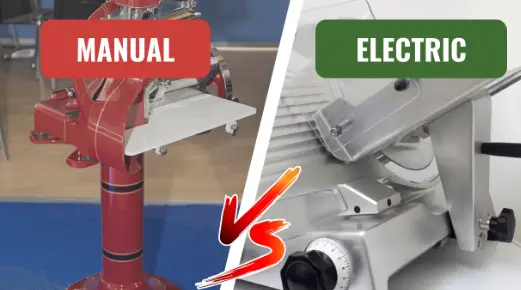
- Automatic slicers can move the product tray without assistance, allowing multitasking.
- Manual slicers are more economical for businesses with less frequent slicing needs.
Cleanability and Sanitation
- Opt for slicers with removable parts, large gaps between components, and easy-to-clean surfaces.
- Regular cleaning and sanitization are crucial to prevent cross-contamination.
Safety Features
- Choose slicers with knife guards, auto shut-offs, and specific start positions to minimize accidents.
- Proper training is essential to ensure safe operation.
FAQs
Are gear driven slicers always better than belt driven slicers?
No, it depends on your specific needs and usage requirements. Gear driven slicers are more powerful and durable, but belt driven slicers are more affordable and easier to maintain.
Which type of slicer is better for slicing cheese?
Gear driven slicers are better for slicing cheese due to their higher torque and direct power transfer.
Do gear driven slicers require more maintenance?
No, gear driven slicers generally require less maintenance than belt driven slicers.
Are belt driven slicers suitable for heavy-duty usage?
While some belt driven slicers can handle heavy-duty usage, gear driven slicers are generally more suitable for such tasks.
Conclusion
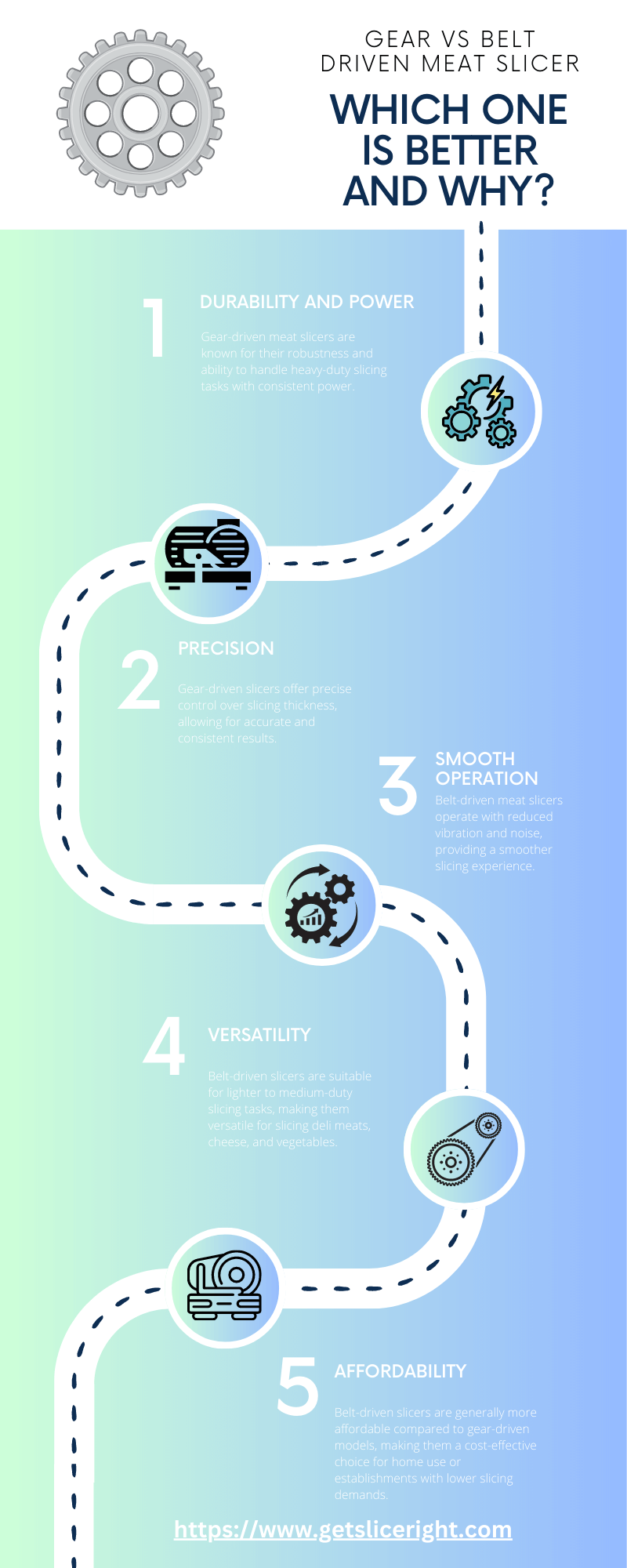
Selecting the right meat slicer for your needs involves considering various factors, including the differences between gear and belt-driven slicers and additional aspects such as blade size, product tray size, and safety features. By carefully evaluating your business requirements and understanding the strengths and limitations of each type of slicer, you can make an informed decision that ensures optimal performance, safety, and cost-effectiveness. With the right slicer and practices in place, you can efficiently prepare delicious, perfectly sliced products for your customers.
| Feature | Gear Driven Meat Slicer | Belt Driven Meat Slicer | Better Choice |
|---|---|---|---|
| Durability | More durable, require less maintenance over time | Less durable | Gear Driven |
| Repair Complexity & Cost | Complicated and more expensive to repair | Easier and less expensive to repair | Belt Driven |
| Performance | High performance, especially with hard products | Excellent performance in standard situations | Gear Driven |
| Price | Generally more expensive | Slightly less expensive | Belt Driven |
| Power Transfer | Direct transfer of power between motor, gears, and blade | Possible slipping or belt breaking | Gear Driven |
| Consistency | Better precision and consistency in slicing | May have less consistent thicknesses in some situations | Gear Driven |
| Cleanability | Similar cleanability, depending on the specific model | Similar cleanability, depending on the specific model | Depends on the model |
| Material | Stainless steel models available for heavy-duty use | Aluminum models available for mid-range and economy slicers | Depends on the model |
| Maintenance | Less frequent maintenance required | Regular maintenance needed for tightening/replacing belts | Gear Driven |
| Noise | May produce more noise due to gear mechanism | Quieter due to belt system | Belt Driven |
| Overall Recommendation | Recommended for heavy use, hard products, and precision slicing | Recommended for standard use, budget concerns, and easier repairs | Depends on requirements |
Based on the comparison between gear driven and belt driven meat slicers, the better choice depends on your specific requirements. If you need a more durable and powerful slicer for heavy use and precision slicing, a gear driven slicer is a better choice. However, a belt-driven slicer may be more suitable if you prefer a more budget-friendly option, easier repairs, and quieter operation. In either case, it is essential to consider factors such as cleanability, material, and maintenance when making your decision.
Summary Of Key Points
- Gear driven slicers are more powerful and durable, suitable for heavy-duty usage.
- Belt driven slicers are more affordable and easier to maintain, ideal for standard situations.
- Choosing the right slicer depends on your specific needs and expected usage.
- When choosing a slicer, consider product types, usage hours, safety features, product size, and maintenance costs.

Mario Batali is a renowned author, food enthusiast, and passionate chef who has dedicated his life to exploring the world of culinary arts. With a love for sharing his knowledge and experiences, Mario has become a prominent figure in the food blogging community, inspiring countless readers with his creativity and expertise.
In addition to his culinary prowess, Mario Batali is also a talented writer with a flair for engaging storytelling. He launched his own food blog to share his recipes, cooking tips, and personal experiences in the kitchen. Over time, Mario’s blog gained a loyal following of food enthusiasts who appreciate his unique approach to cooking and his dedication to using only the finest ingredients.
Mario Batali’s passion for food and his commitment to sharing his knowledge with others have made him a true inspiration in the world of culinary arts. Through his blog, cookbooks, and public appearances, Mario continues to spread his love of food and the joy of cooking with his ever-growing fanbase.


